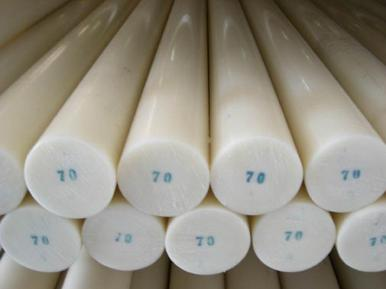SunSirs: China POM Market had a rapid Decline after a Stalemate in the first half of 2023
July 20 2023 14:25:19 SunSirs (Selena)
On June 30th, the Engineering Plastics Index was 666 points, a decrease of 41.63% from the highest point in the cycle of 1,141 points (2018-09-09), and an increase of 17.67% from the lowest point of 566 points on May 6th, 2020. (Note: The cycle refers to the period from December 1st, 2011 to the present)
In the first half of 2023, the prices of various domestic engineering plastics products mostly remained stagnant and fell. According to the monitoring of the Commodity Market Analysis System of SunSirs, as of June 30th, there were 2 products that rose and 3 products that fell on the list of engineering plastic prices. The main commodities that have increased are PET (+0.56%) and PA6 (+0.13%); The main commodities that fell were PA66 (-9.58%), PC (-14.02%), and POM (-20.33%).
In the first half of the year, the fundamental patterns of various products in the engineering plastic industry had their own strengths and weaknesses. The price trend in the first quarter naturally showed significant differentiation, but the common point was the general decline in the second quarter. As of the end of June, only PET and PA6 were able to maintain the price level at the beginning of the year, with other products experiencing even greater declines. Among the market bearish factors, in addition to the sustained high load and low consumption in the industry, the main impact comes from the weakening of international crude oil in the upstream of Tongtong. On the other hand, the current global impact of imported inflation still exists, and the profitability of engineering plastic production enterprises is still facing challenges. There is little improvement in the operational risks of factories at all levels. Overall, in the first half of the year, engineering plastics saw a combination of bearish conditions and a decline in the market.
In the first half of this year, the POM market emerged from a stalemate in the first quarter and a rapid decline in the second quarter. In the first quarter, domestic POM supply and demand both increased, and in February, there was even a phased shortage of goods and a surge in speculation. But as the high load in the industry continues, inventory pressure from factories and society begins to accumulate. According to statistics from SunSirs, the average operating rate of POM in the first half of the year was around 90%, with the industry approaching full capacity for most of the period. In addition, upstream formaldehyde initially increased and then decreased, resulting in weak support for both POM supply and cost in the second quarter. The demand side of enterprise consumption is also difficult to follow up with the continuous high load. In addition, as the temperature heats up and some downstream areas are affected by limited electricity, the operating rate is low, and actual transactions have weakened, exacerbating the stagnation of on-site supply. Although the market has experienced a decline and buyers are following suit, it is still recommended to closely monitor the trading situation in the POM industry.
In the first half of 2023, the market for the five types of engineering plastics mentioned above generally fell three times and remained stable, with overall gains being minimal and losses being significant. Within six months, the industry market has been weak and difficult to improve. Compared with the same period last year, the price position of each product is basically at a three-year low. At the same time, international crude oil fluctuated and fell, and the support for engineering plastics' common remote raw materials has cooled. In addition, the macroeconomic environment has not provided sufficient support for the engineering plastic industry, and polymerization enterprises are generally cautious in pricing. They often lower the factory price to reduce operational risks. Therefore, the commodity market analysis system of SunSirs believes that the fundamentals of the engineering plastic industry were weak in the first half of the year, and the market momentum was poor. At present, engineering plastics is about to gradually enter the off-season of demand, and it is expected that if the market turns positive, it may wait until the traditional peak season.
If you have any questions, please feel free to contact SunSirs with support@sunsirs.com.
- 2024-04-25 SunSirs: Device Maintenances, China POM Market Stabilizes
- 2024-04-08 SunSirs: China POM Market is Weak and Falling during Qingming Fesival
- 2024-04-01 SunSirs: Weak Demand Leads to a Decline in China POM Market
- 2024-03-28 SunSirs: Market Momentum Remains Stable, China POM Market Narrowly Fluctuated in March
- 2024-03-25 SunSirs: Trading Situation is Average, China POM Market is Stagnant



